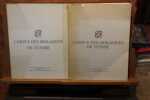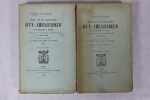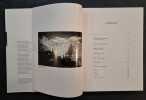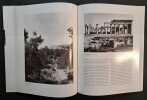13417 books for « alexander j j g »Edit
-
Type
Art print (2)
Book (13319)
Engraving (1)
Magazine (5)
Manuscript (2)
Maps (2)
Music sheets (80)
New book (6)
-
Latest
Last 3 days (48)
Last month (1223)
Last week (870)
-
Language
Dutch (7)
English (28)
French (2656)
German (11)
Greek (2)
Italian (2)
Japanese (1)
Latin (4)
Russian (10706)
-
Century
16th (4)
17th (4)
18th (66)
19th (163)
20th (1186)
21st (224)
-
Countries
Belgium (220)
Brazil (6)
Canada (21)
China (10)
Côte d'Ivoire (3)
Denmark (92)
France (1830)
Germany (4)
Greece (4)
Italy (8)
Netherlands (48)
Switzerland (401)
United Kingdom (15)
United States of America (10755)
-
Syndicate
ALAC (16)
CLAM (20)
CLAQ (3)
ILAB (1271)
NVVA (84)
SLACES (84)
SLAM (952)
SNCAO (1)
Topics
- Actors (10)
- Africa (15)
- American literature (8)
- Archaeology (16)
- Architecture (48)
- Army (7)
- Astronomy (7)
- Belgium (8)
- Bible (12)
- Biography (19)
- Calder alexander (9)
- Children’s books (35)
- China (10)
- China (20)
- Christmas (7)
- Cinema (16)
- Circus (9)
- Civilisation (9)
- Dance & ballet (7)
- Detective novels (11)
- Early printed books (11)
- Economics (7)
- England (11)
- English (51)
- Engravings (10)
- Entomology (9)
- Ethic (7)
- Fine arts (47)
- First edition (41)
- Flora (7)
- Fox (7)
- Furniture (9)
- Furniture (8)
- Geography (24)
- Germanic languages (76)
- Germany (16)
- Greece (9)
- Guittoneau ben (11)
- Helvética (41)
- Hermeticism (8)
- History (163)
- Industrial arts & crafts - fine arts (7)
- Java (7)
- Latin (22)
- Law (13)
- Lernet-holenia alexander (12)
- Literature (140)
- Magazine (8)
- Mc kee alexander (22)
- Medicine (38)
- Military arts (8)
- Music (17)
- Navy (18)
- Newspapers press (10)
- Painting (16)
- Paris (8)
- Philosophy (30)
- Photography (29)
- Physics (8)
- Poetry (12)
- Pope alexander (21)
- Prokofiev (21)
- Psychoanalysis (15)
- Psychology (28)
- Religions (23)
- Review (8)
- Reviews (7)
- Revue de l'art (8)
- Russia (28)
- Sciences (32)
- Scores (99)
- Sculpture (11)
- Shapes & colours (7)
- Silversmith’s trade (7)
- Songs (77)
- Switzerland (33)
- Symbolism (8)
- Tea (63)
- Technology (8)
- Theatre (8)
- Theology (22)
- Translation (10)
- Travel (16)
- United states (11)
- Ussr (14)
- Various (24)
- Walker alexander (11)
- Waltz (20)
- War (56)
- Werth alexander (25)
- Western (7)
- Williams tennessee (8)
- Woods & woods’ price lists (7)
- Youth (8)
- Zoology (8)
Les Eskimos, chasseurs du Grand Nord
Soline 1988 In-folio relié. 160 pages. Très bon état d’occasion.
Très bon état d’occasion
Nurnberg
Charles Alexander, impr. Karl Ulrich & Co., Nurnberg 1946 In-4. Album cartonné beige, dos carré havane muet, premier plat avec vignette et report du titre marron, 2 ff. -50 planches photographiques sépia et en noir & blanc légendées, 4 plans ronéotypés volants de la salle d’audience du procès. Cartonnage légèrement frottée.
Vues du procès de Nuremberg, de la ville, de ses habitants et de ses environs. Bon état d’occasion
Corpus des Mosaïques de Tunisie. Utique Les mosaïques in situ en dehors des insulae I-II-III - Thuburbo Majus Les mosaïques de la région du forum
Tunis, Institut National d’Archéologie et d’Art, En collaboration avec un groupe d’Universités et d’Institutions américaines 1980 2 volumes. In-4 21 x 27 cm. Brochés sous couvertures imprimées. XI + 89 pp., 51 planches en noir et blanc et en couleurs hors-texte, 18 plans dépliants in fine. - XXVI + 172 pp., 79 planches en noir et blanc et en couleurs hors texte, 34 plans dépliants in fine. Volume I : Région de Ghar el Melh Porto Farina Atlas archéologique de la Tunisie, Feuille 7, Fascicule 2 Utique, Mosaïques in situ en dehors des Insulae I-II-III - Volume II : Région de Zaghouan Atlas archéologique de la Tunisie, Feuille 35, Fascicule 1 Thuburbo Majus, Région du Forum
Très bon état d’occasion
Eugene Onegin. A Novel in Verse Translated from the Russian, with a Commentary, by Vladimir Nabokov
Bollengen Series, Pantheon Books 1964 4 volumes in-8, toile éditeur sous jaquette, étui imprimé. Dos passés, coupure sans manque 3 cm sur une jaquette. Bon exemplaire.
Edition originale de la traduction. Bon état d’occasion
Bland Alexander, Gilbert Claude
Reference : 73141
(1976)
ISBN : 2260000371 9782260000372
Neuf ans de souvenirs d’un ambassadeur d’Autriche à Paris sous le Second empire (1851-1858). Publié par son fils le Comte Alexandre DE HÜBNER.
Plon 1905 2 volumes in-8 broché, IV- 474 - 431 pp. Portrait frontispice. Couv. lég. ternie. Dos passé.
Important journal diplomatique, notamment pour la guerre de Crimée et l’Italie. Mentions de seconde et troisième édition. Bon état d’occasion
HAMILTON, Alexander; JAY, John; MADISON, James
Reference : 130505
(1988)
ISBN : 2717815708
Le fédéraliste. Préface de André Tunc
Economica 1988 In-8 broché 24 cm sur 15,7. 788 pages. Bon état d’occasion.
Bon état d’occasion
Architecture grecque classique : La construction de la modernité
Paris, Flammarion 2004 In 4 31,5 x 24 cm. Cartonnage sous jaquette, 279 pp, illustrations en couleurs et noir & blanc.
Bon état d’occasion
Ogi: A History of the Japanese Fan
Dauphin Publishing 1992 Livre en anglais. In-4 reliure éd. sous jaquette 30,5 cm sur 24,1. 111 pages. Jaquette en très bon état. Très bon état d’occasion.
Très bon état d’occasion
Klotz (Heinrich) - Rappaport (Alexander G.)
Reference : 9741
(1988)
ISBN : 0847812847
Paper architecture. The new projects from Soviet Union
Rizzoli New York, Deutsches Architektur Museum 1988 In-4, broche, 111 pp., illustrations noir et couleurs.
Bon état d’occasion
Edward Weston, A photbgrapher’s love of life
The Dayton art institute 2005 In-4 broché. Livre en anglais. Bon état d’occasion.
Bon état d’occasion
Traité des dissensions entre les nobles et le peuple dans les Républiques d'Athènes et de Rome, etc. L'art de ramper en poésie, et l'Art du mensonge politique; traduites de l'Anglois de M. Swift.
Lausanne, Marc-Mich. Bousquet & comp. 1750 Petit in-8, plein veau marbré, dos lisse, pièces de titre et de tomaison, filets et fleurons dorés, XVI- 280 pp. Mors fendillés, une charnière usée, dos usé. Bon int.
Seconde édition française de ces pamphlets satiriques du début de la carrière littéraire de Swift, ici pour servir de suite au Conte du tonneau (3° tome). Le Traité des dissensions se termine par un important chapitre sur l'état présent du Royaume d'Angleterre. L'Art de ramper en poésie est un essai critique burlesque à l'encontre des poètes contemporains de l'auteur. Il serait dû à la collaboration de Swift, Arbuthnot et Pope, le texte définitif étant probablement de Pope (H. Teerink, (A Bibliography of the writings... of Jonathan Swift) Bon état d’occasion Livres anciens
Le stylo a plume. Guide du collectionneur
Soline 1997 In-8, reliure éditeur sous jaquette, 192 pp. Illustrations couleurs
Bon état d’occasion
Portrait d'un film. Noureev-Valentino
Chêne 1977 1 vol. in-8 broché. 124 p. : ill. en noir et en coul., couv. ill. en coul. ; 24 cm. Etat correct.
Très bon état d’occasion
A la recherche des Thraces
France Empire 1978 In-4 reliure éditeur sous jaquette, 156 pp. Illustrations noir & couleurs. Jaquette déchirée, manque en pied.
Bon état d’occasion
Un cas de dématérialisation partielle du corps d’un médium. Enquête et commentaire.
Librairie de l’art indépendant 1896 In-12, pleine toile, 221 pp. 2 planches hors-texte. Reliure un peu fanée.
Traduit de l’allemand. “Ouvrage capital pour l'intelligence des faits de matérialisation des Esprits” (Caillet) Très bon état d’occasion
Temoins du mur de l’atlantique. Pas de Calais, Normandie, Bretagne / Getuigen van de Atlantik-Wall
Heimdal 1983 In-8 cartonné. Edition Bilingue Français / Allemand.. Bon état d’occasion. Poids sans emballage : 350 grammes.
Bon état d’occasion
Vie et moeurs des papillons
Horizons de France 1957 Expédition très soignée, tous les mardis et vendredis. In-4. Cartonné. Livre en Français. Pas de jaquette. Etat correct d’occasion. Soixante quatre planches en héliogravure des dessins et vingt-quatre hors-texte avec cent photographies en couleurs.
Soixante quatre planches en héliogravure des dessins et vingt-quatre hors-texte avec cent photographies en couleurs. Etat correct d’occasion
In Barbary, Tunisia, Algeria, Morocco and Sahara
N.Y., The Century Co 1926 In-8, toile éditeur décorée, XXII- 483 pp. Planches hors-texte, carte repliée. Bon exemplaire.
Bon état d’occasion
Manuscrits de la Renaissance italienne. Traduit de l'américain par Robert LATOUR.
Chêne 1977 In-4 broché. Très bon état d’occasion.
Très bon état d’occasion
Ogi: A History of the Japanese Fan
Dauphin Publishing (Oxford) Ltd 1992 In-4 relié 29,2 cm sur 22,6. 116 pages. Bon état d’occasion.
Bon état d’occasion
Russian Gold and Silver
Trefoil Publications Ltd 1981 Tampon d’exemplaire d’archive
Bon état d’occasion
Orfévrerie Russe du XVIIe siècle au XIXe siècle
Office du Livre - Editions Vilo. Paris Tampon d’exemplaire d’archives.
Très bon état d’occasion
The birds of the republic of Panama Volume 150 Part 3 Passeriformes : Dendrocolaptidae (Woodcreepers) to Oxyruncidae (Sharpbills)
Smithsonian Institution Press Washington 1972 Editions en anglais. In-4 relié couverture toilée éditeur sans jaquette. Index. 631 pp
Très bon état d’occasion
 Write to the booksellers
Write to the booksellers









